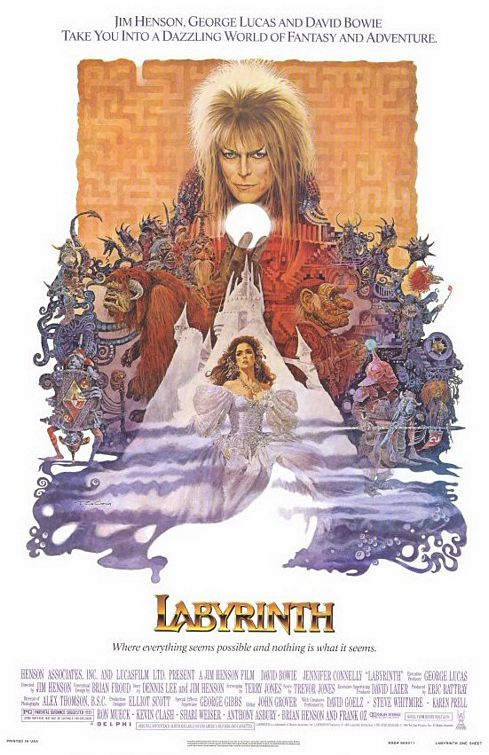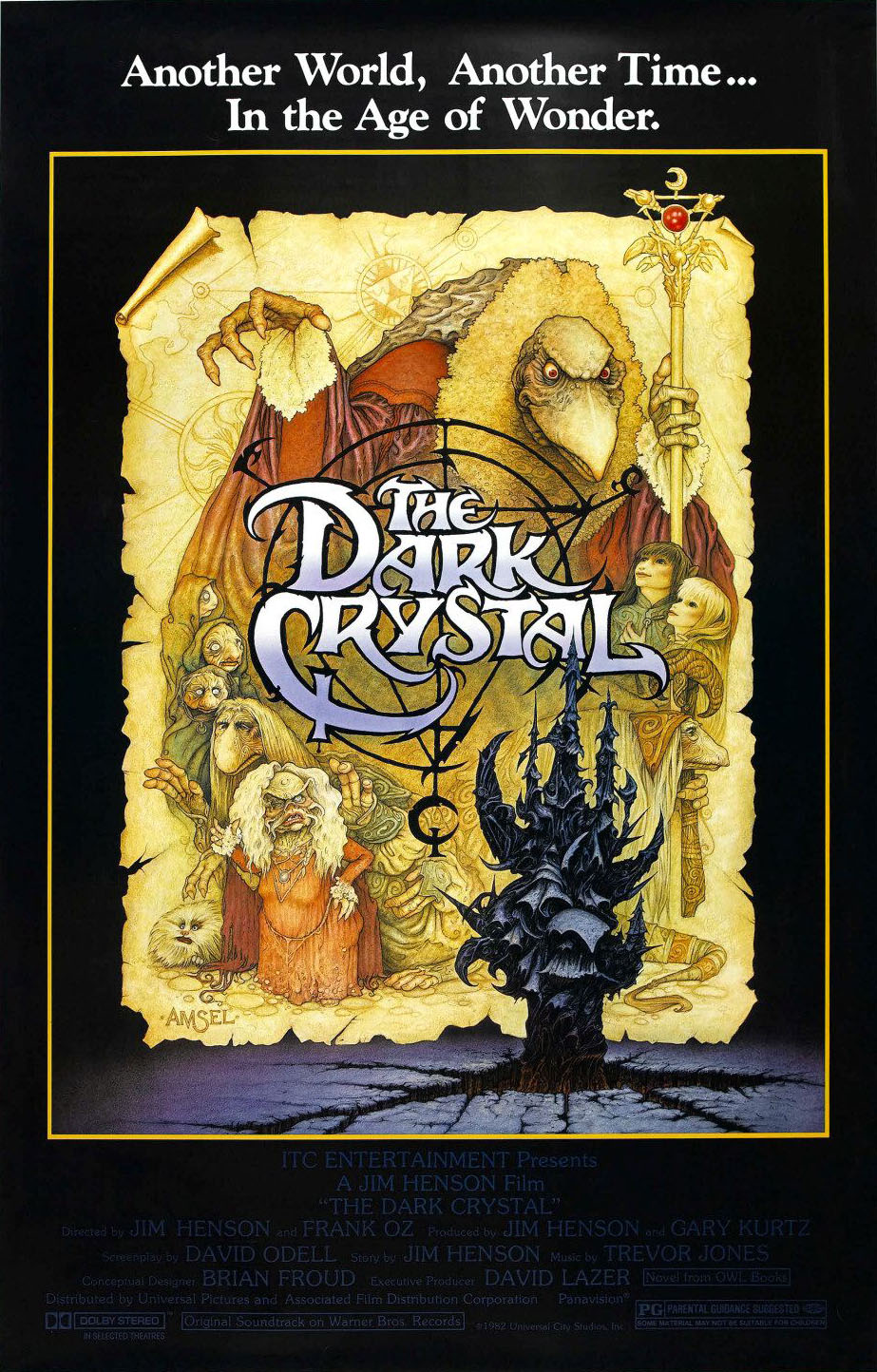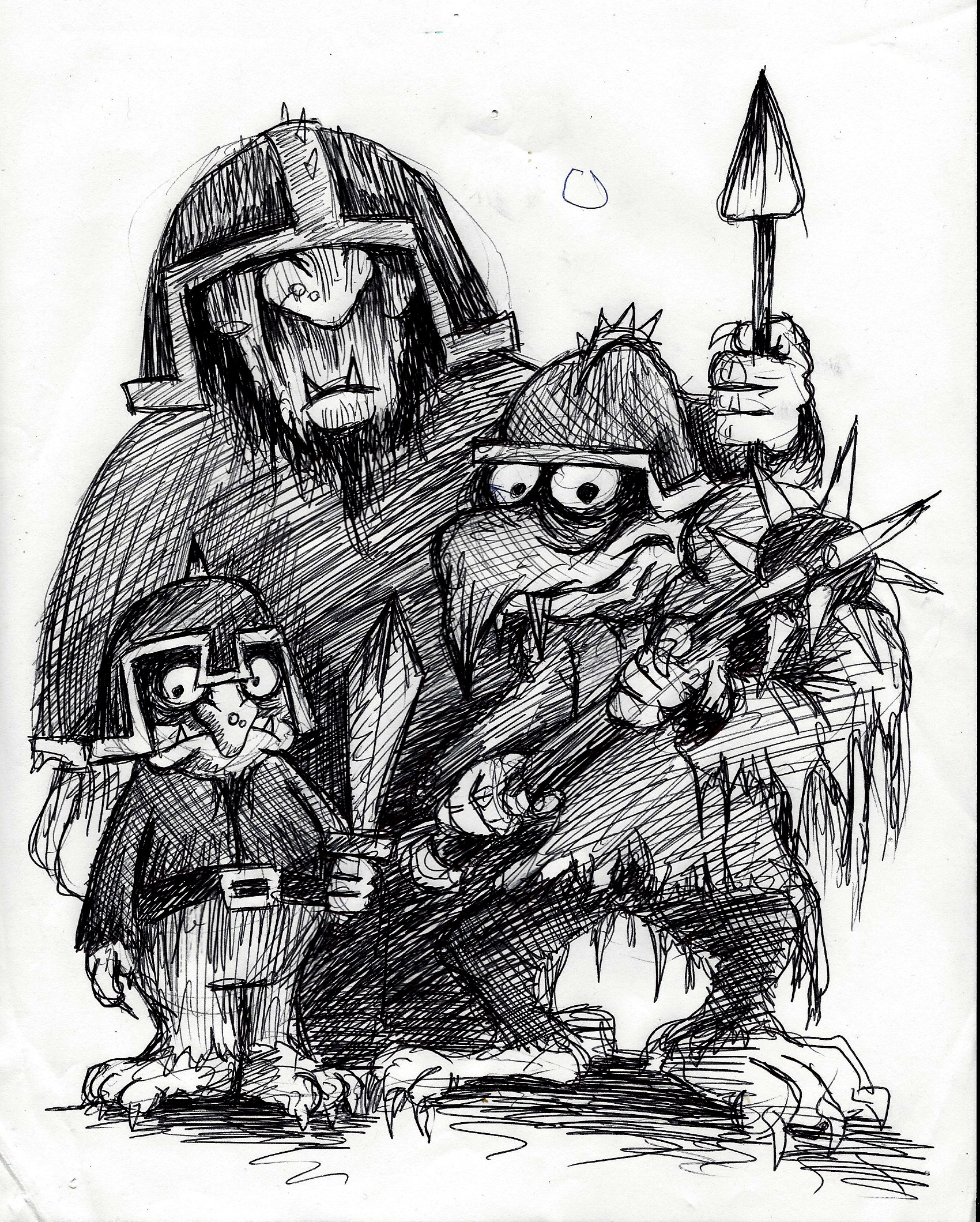For the love of Labyrinth
On September 11 and 14, Fathom Events is bringing Jim Henson's 1986 fantasy extravaganza — Labyrinth — back to theaters for two days of big screen bedazzlement.

David Bowie will rise again as the Goblin King, tempting and tormenting poor Sarah by stealing her baby brother away into his lair full of rowdy goblins.
Sarah — young Jennifer Connelly in her star-making role — will venture into the Labyrinth, find friends and foes, dance with her enemy and dodge his various tricks. She'll meet talking knockers (literally) and Helping Hands. She'll learn to love lumbering Ludo, and humbly bear the hassle of Hoggle.
And we'll all sing "Dance Magic Dance!"
But there's no need for delay. Let's get the party started.
Were you there when Labyrinth opened 30 years ago?Post a Comment below:
Tell us about
- your favorite character,
- your favorite scene,
- your favorite song.
Tell us about
the nightmaresit gave you.
Here's a conversation that I had with animator, teacher, and author Ken Priebe.Ken's imagination is a labyrinth richly influenced by the inventions of Jim Henson, George Lucas, and Brian Froud. Ken likes to write books, draw pictures, make movies and bring puppets to life. He literally wrote the book (books, plural, actually) on stop-motion animation. He's currently working on a book called Gnomes of the Cheese Forest. (He's also the guy who drew that sketch of me that you see at the bottom of the Looking Closer home page.) Originally from Michigan, Ken has worked and taught for many years in the world of animation, and currently lives near Vancouver, Canada, with his wife, two children, two cats, one dog, and the monsters in his head. He likes birds, too.
We talked about our childhood memories of Labyrinth, what it means to us today, and just how it endures as a singular experience in the wacky and weird.
•
Overstreet:
The Muppet ShowStar WarsThe Dark CrystalLabyrinth
Do you remember looking forward to Labyrinth? Or did you discover it later?
Priebe:
I still remember discussing Labyrinth with my mom afterwards, and she remarked how many of the film reviews at the time thought it was too scary for kids, but she disagreed. We both felt it was great fun, with plenty of imagination and entertainment. All I knew of David Bowie at that time were songs like "Let's Dance" and "Dancing in the Street" (he sure liked to dance in the '80s) but I fell in love with more of his music years later.
And I do seem to remember that original movie poster for Labyrinth with Bowie's face in the paper got me excited too.

Overstreet:
The Dark Crystal
And in retrospect, that seems like the right way to step through the gate into the fantasy worlds of Henson and Lucas. Landmarks of hand-made creativity — both of them. A great deal of the magic of both films comes from the lovingly crafted puppetry. They made me want to make things. The designs of those characters influenced the designs of my own characters in storybook after original storybook. I even did a puppet show for the kids in my neighborhood called "Quest for the Enchanted Stone" that was, looking back at it now, pretty much a rewrite of The Dark Crystal with the characters' names changed and physical appearance slightly altered.
Did those two films have a lot to do with your own developing interest in making puppets and designing characters? I mean, you're still doing that today at a remarkable level of artistry. (Me, I've settled for describing them in writing.)
Priebe:
The Auralia Thread
For me as well, these films (along with others from the same era like The Secret of NIMH and The NeverEnding Story) made a huge impact on me and my work, even years later after first seeing them at such a young, impressionable age. I've probably watched the behind-the-scenes features almost as many times as the films themselves.

The Goblin Companion: A Field Guide to Goblins
It's remarkable, isn't it, how a film can have such a lasting impact on us even 30 years later?
Overstreet:
There are so many characters I love, who inspire me to greater creativity: Ludo, the door knockers, Sir Didymus, and the Wise Man. He narrated the prologue for Watership Down, and he played Gandalf in the BBC radio series of The Lord of the Rings.)
And then there's Jareth, the Goblin King himself, of course — a villain who is memorable precisely because you can see why a lonely adolescent like Sarah would become smitten with him. He's as mysterious, unsettling, and strange as puberty itself.
And yet, it's that very episodic nature that brings about the one thing that prevents me from loving it as much as I love The Dark Crystal. The Dark Crystal has that Joseph Campbell Power of Myth thing going for it — its story has such strong bones, and every episode feels necessary. There's a musical number in Labyrinth — the one that features "the Fieries" — that feels so tacked on, so tangential, and (most importantly) so poorly realized that it lets some of the air out of the balloon. Whenever I get to that scene, some of the magic dies for me. If the film had been more tightly concentrated to consider how Sarah's journey serves as a coming-of-age process, it would have made an even stronger impression.
Does it all hold up for you after 30 years?
Priebe:
Part of the reason why Dark Crystal works so well is because the style and tone stays pretty consistent throughout, which Jim found refreshing after working in so many varied styles doing The Muppet Show. By the time Labyrinth came along, MTV had made such a huge stamp on pop culture, and critics at the time didn't know if the film was an actual story or an extended music video. I think it was trying to be many different things at once, much like Jim Henson himself at that stage of his career. He was trying to balance his personal and professional life with the many different directions his company was taking, and this shows in Labyrinth.
What holds up for me through the years are still Bowie's performance; his music; the sequences with the clever wordplay — like the lying/truth-telling guards, the helping hands, the wizard with the bird hat). And the sequences with the most imaginative visuals — like The Cleaners, the ballroom scene, the Escher-like maze of stairs, and that first shot of the goblins when the first one wakes up and says "Listen!" (Such an amazing moment!)
But even more so, the theme of transitioning from being a child to being an adult while trying to hold elements of both together, which is really the heart of the movie and what Jim most wanted to communicate to his audience. I think that speaks a lot to its staying power.
Overstreet:
The Helping Hands! How could I forget? That scene was reason enough to see it on a big screen.
Having just revisited — rediscovered, really — Hitchcock's Vertigo, I've been thinking about movies in which a man becomes so obsessed with a beautiful woman that it turns him into a monster. Labyrinth is one of those. Bowie's Goblin King is, in a certain light, a tragic monster. Baiting Sarah with the baby's kidnapping, Jareth seems more mischievous than malevolent. But the farther we go, the more frightening he becomes. He is drawn to beauty, but he cannot imagine a love story in which he does not conquer and possess the woman he's pursuing.
The lyrics of Jareth's climactic song make him out to be not a partner but a demon: "Do as I ask, and I shall be your slave," he laments. And then, frustrated, he concludes, "I can't live within you." Not without you, but within you. Those are the words of a demon, not a potential partner. It's the equivalent of that song by The Police — "Wrapped Around Your Finger." The seducer offers his potential victim the prospect of power, but in promising to serve her he is actually plotting to win control over her.
Heathen
I don't sit and wait I don't give a damn I don't see the point at all No footprints in the sand
I would give you all my love Nothing else is free Open up your heart to me And I would be your slave
Labyrinth
Still, it ends tidily and properly, with Sarah vanquishing evil through the realization that it has no power over her unless she allows it. Somewhat anticlimactic. And, frankly, I feel a sense of loss for both the girl and the Goblin King. They would have been such a match, had they found a way into love.
Priebe:
Jim Henson always had a desire to pursue darker, very introspective themes in his work, and you see that in many of his early and unrealized projects. There are also plenty of sexually suggestive images in his brilliant short film Timepiece, and the unrealized script that he wrote with Jerry Juhl called Tale of Sand had some pretty risqué things in it too. Even his title for the original Muppet Show pilot was called "Sex and Violence" and had a few blush-worthy moments snuck into it.
You could almost play Labyrinth as a double-feature with Inside Out for a fully introspective discussion on this theme. It's interesting how the latter film also uses the image of a labyrinth storing all of Riley's memories (and co-incidentally, Frank Oz was also involved in both films). The janitors in Inside Out who go through cleaning out Riley's old memories are almost like the goblins who mess with Sarah's lipstick marks she makes to help her retrace her steps. But as any complex mind of a teenager will do, "it keeps changing!"
The labyrinth in Labyrinth is like a metaphor for Sarah's mind and how she needs to learn how to live with the consequences of her decisions without losing herself in the process. I absolutely love that moment where the first thing she says to Jareth in their final showdown is a reprise of the first line in the whole movie: "Give me the child." While Jareth is trying to seduce her into adult choices she's not quite ready to make, she makes a plea to keep the playful child in her intact even as she grows up, for "her will is as strong as his, and her kingdom as great."
Even though in another sense the "child" she's referring to is actually her baby brother, applying this as a metaphor for herself brings to light another thought. Though never stated out right, it's implied through the photos in Sarah's bedroom that her mother is gone (either through death or possibly divorce) and her mother at the opening to the film is referred to as her stepmother. My guess is that Toby is actually her half-brother, newly born to her father and his new wife. So from this angle, Sarah is also retreating into her childhood as a form of grieving and rebellion. This makes her even more vulnerable to the seductions of the Goblin King, but in the end she gives her teddy bear to Toby and removes the photos from her mirror as a way of making peace with what she's lost.
P.S. — On a related note, too bad we don't live closer to what's opening in Atlanta right now.
I hadn't thought about the possible jealousy factor at all. It rings true, and it might cast another light on her resistance to Jareth — he's a competitor for her father, or, perhaps, in his almost androgynous state, her mother. He's threatening to step into a role of authority that he has no right to claim. It would've been very interesting if her father and stepmother had played a more prominent role.
Clearly, I need to watch this again.
Okay, two questions: You're the animator and puppeteer. Of the non-human characters — who's your favorite? And why?
And who do your kids like best? (And why?)
My kids have seen the film at least a couple of times now. My daughter, who just turned 10, had the Goblin King has her immediate first answer for favorite character (I've already made her an early Bowie fan... parenting win!). But for a puppet, she picked Ludo because he's cute.
My son, who just turned 7, likes Sir Didymus and his dog Ambrosius (who was sometimes a puppet, sometimes a real dog). When he runs across the rocks in the Bog of Stench, the sound effects get plenty of laughs.
What about your favorites, as an imaginative writer of fantastic creatures?
But Bowie makes the Goblin King one of the all-time great villains. He gives himself so completely to the role, and makes the climactic seduction scene far more compelling than it has any right to be in the middle of so much silliness and madness. He's the heart of the movie, and I think he has as much to do with why people still love the movie as the puppets do.
I wonder, though, which character had the greatest influence on my own fantasy novels.
And she does ride on a giant cat, like Didymus on his dog — but with far more grace.
From what I remember, lots of summer movies geared towards kids in those years were getting a bad rap for either being too dark (like Gremlins or The Black Cauldron) or laced with profanity and violence (like The Transformers Movie). So this didn't really help make Labyrinth a film that most audiences trusted to see initially.
But over 30 years it's still managed to inspire everything from art to comics to puppetry to literature to retrospective exhibits (to blog posts) and everything in between, with multiple ways to interpret what it all means. Who knows, it may just end up being a classic, like the works of Lewis Carroll or the Brothers Grimm, that people dissect and talk about for decades.
